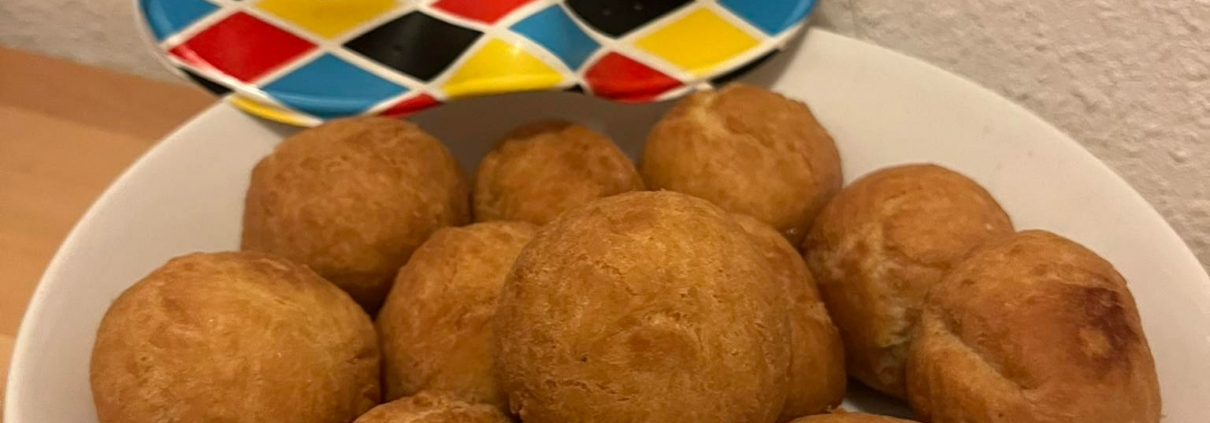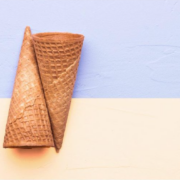Carnival is coming: it’s that time of the year when frying is a must… don’t be shy!
Are you still figuring out which treats to make for Carnival? Discover new yummy recipes!
In Italy we say: “a Carnevale ogni scherzo vale”, at Carnival every joke is valid, and that’s for sure… but for us food fans maybe the saying “at Carnival every fried food is valid” is more appropriate, don’t you think?
Carnival is a celebration that has its origins in Ancient Rome, where they held the Saturnali: pagan ceremonies in honor of Saturn, god of agriculture and civilization. Saturn in fact was meant to propitiate a fertile start to spring, and with the festivities the Romans bid farewell to the barren winter. So they celebrated this coming period of prosperity with plenty of food, drink, dancing, singing and lots of fun. Well, didn’t you feel like partying too now?
The term Carnival derives from the Latin carnem levare, literally ‘to remove the flesh’, as this festivity, in the Catholic community, precedes the beginning of Lent, i.e. the 40 days leading up to Easter, as well as a period of fasting, sacrifice and abstinence, where no meat can be eaten.
Well, in order to be faithful to tradition and try not to indulge in Lent, we just have to console ourselves with some great desserts while we still can! That’s why we’ve sum up 10 super-delicious recipes for fried sweet treats typical of the carnival period in Italy…
Do you think you have tried all the recipes of fried carnival desserts of the various Italian regions? There are tons of traditions, let’s discover them and their funny curiosities below!
Chiacchiere
Let’s kick off “with a bang”, Carnival’s most popular dessert: Chiacchiere, or how do you call it? Frappe, cenci, bugie, gnocculi, galani, cròstoli… every region has its name for them. But however you call it, do you know their story? These pastries were prepared by the ancient Romans during the Saturnali and were called ‘frictilia‘, because they were fried in pork fat.
The preparation is not complicated: prepare a dough with flour, sugar, butter, eggs, and liqueur. Cut it into serrated strips, then fry them and serve with plenty of sugar on top.
But there is also a curious legend about their name! In fact, it is said that Queen Margherita of Savoy had asked for some sweets to be eaten during chats with her guests, so the cook gave them the name “Chiacchiere” (chatter in Italian). I mean, they are just perfect for a gossipy snack with friends, aren’t they? If you want to make a good impression, with them you won’t fail!
Visualizza questo post su Instagram
Castagnole
If you are an autumn lover, perhaps this recipe will remind you of the sweet chestnuts, but don’t get your hopes up, they only have the shape and name of chestnuts, not the flavour! These sweets are in fact small balls of flour, yeast, butter, sugar, and eggs, fried and often filled with custard, chocolate, or cream, but tasty also hollow… Oh, don’t forget the final touch: rolling them in sugar! Isn’t your mouth watering too?
Visualizza questo post su Instagram
Pignolata al miele
Now let’s take a carnival leap to beautiful Sicily to enjoy these little pieces of dough fried in lard and covered in honey. They are usually served in small piles to make them look like pinecones, which gives them the name of “pignolata”. If you love sweetness and crunchiness, we assure you will not be disappointed!
Visualizza questo post su Instagram
Graffe
We all know that Italian cuisine has gifted us with the creation of so many delicacies, but well, this time we have to put our pride aside and admit that graffe have Austrian origins. In fact, their name derives from ‘Krapfen‘, typical Austrian doughnuts which arrived in Italy after the Austrian domination of the Kingdom of the Two Sicilies in the 1700s.
Nonetheless, we have to say that the Neapolitans gave their unfailingly original twist to the recipe: in addition to flour, sugar, milk, eggs, and butter, they also add potatoes to the dough to make the graffe even fluffier and tastier. Now that you know all about their fantastic history, you just have to try them!
Visualizza questo post su Instagram
Arancini di Carnevale
Don’t be fooled again by the name, because these Arancini have nothing to do with the savoury Sicilian ones. Nevertheless they are a very tempting dish don’t worry!
For this dessert of Marche origin mix an egg pastry with sugar and orange zest and add it to a yeast dough. This is then rolled into the shape of a “girella”, fried and dipped in honey. If you do not go crazy for orange, you can try an alternative version with lemon peel: the smell will always be irresistible!
Visualizza questo post su Instagram
Cassatelle
We hope you haven’t got over your sweet tooth, as we are only halfway through our culinary journey! Indeed, we are back in Sicily, in the small town of Calatafimi, home town of the so-called ‘cassateddi‘, typical sweet ravioli filled with sheep’s ricotta cheese, cinnamon and chocolate drops. The particularity of the dough this time lies in the addition of Marsala liqueur wine, which gives it the right sweetness and unique flavour. If you want to surprise your guests at Carnival, this is the right recipe!
Visualizza questo post su Instagram
Frittelle di riso
We all love fritters, yes, but rice fritters… they are amazing! This dessert was originally created to celebrate Father’s Day on St Joseph’s Day, but now it is prepared for the whole Carnival period… probably because it is too yummy to enjoy in just one day!
The recipe is also very simple: you cook the rice in milk adding lemon or orange zest and then mix it with flour, egg and sultanas. Now all you have to do is create balls, fry them and serve them for a great snack!
Visualizza questo post su Instagram
Cicerchiata
Are you a chilly person, looking forward to the spring season to warm you up? This recipe will help you to get through this cold time! Cicerchiata is in fact a cake consisting of balls made of flour, eggs, sugar, and butter, sprinkled with honey and arranged in a circular shape. This particularity symbolizes a cycle, i.e. the regeneration of spring after the end of winter.
This dessert of medieval origins takes its name from a legume widespread in central-southern Italy called cicerchia. So, if you want to welcome the new season with taste and sweetness, don’t miss it!
Visualizza questo post su Instagram
Guanti caleni
Does it seem strange to you that a carnival pastry has the shape and name of a ‘glove‘? Well, we’ll admit it: it is strange but not surprising, as this recipe was born out of a fun fact.
In the 1700s, during a celebration, a woman had made some original sweets from yeast dough enriched with lemon, aniseed and vermouth, and to give them a shape, she rolled the dough into strips around her hand. Seeing the result, she exclaimed: ‘Me pare propriu nu ‘uanto‘ (It looks just like a glove), and from that moment on, the recipe spread throughout the town, and it became common to bake it during the Carnival period.
This dessert is very soft inside and crunchy outside, you must try it!
Visualizza questo post su Instagram
Zippulas
And here we come to the end with a typical Sardinian recipe that needs careful consideration and time but is definitely worth it! #
The dough for zippulas consists of eggs, potatoes, orange, lemon, sugar, milk or water and saffron. The most important part of the preparation is the proper rising and kneading of the dough, which must be very elastic otherwise the zippulas will not have their characteristic spiral shape.
To be sure of that, according to Sardinian tradition, during the cooking process there must always be the so-called ‘jana maista‘, i.e. the most experienced cook who kneads and coordinates the others. Once fried, they must be dipped in sugar and then eaten very hot: beware of the strong temptation to taste them in one bite, because they will burn!
Visualizza questo post su Instagram
We may have gone a little overboard on the fried food this time, but a few weeks per year it can’t hurt that much. Besides that, it’s not a real Carnival without fried desserts… hurry up and prepare the most tempting ones, this time you have the right excuse to fry without feeling guilty!









